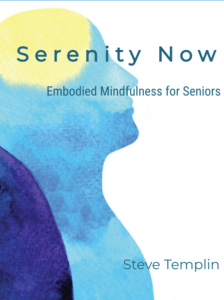For me, ‘surrender’ equates with letting go, trusting, and essentially getting out of my own way.
This surrender, this letting go helps to clear the way for a larger something within me to emerge. Call it an inner voice, intuition, or spiritual guidance, this larger something becomes more available to inform and guide me.
Surrender Becomes Biology
Feeling safe seems to be a prerequisite for the act of surrender. When we’re safe the sympathetic, or fight or flight side of the nervous system, begins to relax. At the same time the parasympathetic, or rest, digest, and heal side of the nervous system becomes more active. We begin to heal.
From the perspective of a more balanced autonomic nervous system, the act of surrender can lead to enhanced health and healing on all levels because the ANS controls our health and well-being. Obvious benefits would include a quieter and more peaceful mind, greater muscular relaxation, a sense of greater ease, and less inflammation and pain.
With increased safety and a more balanced ANS comes better left and right brain balance and brain wave synchronization. As we balance brain function we enhance our mental, emotional, and physical resiliency.
Surrender 101: How To Let Go
We need to make a decision to let go. It may help to remind yourself that there are forces in creation greater than yourself that are able to safely support you if invited to do so. Letting go offers that invitation. Often it’s pain or fatigue that motivates us to surrender, let go, and get out of our own way.
One very effective approach to letting go involves letting go of habitual patterns of perception. With the stress response comes a very narrowly focused form of attention that’s ideal for guaranteeing survival. It’s akin to the hypervigilance we’d employ when trying to quietly hide from a stalking predator. Another variation of this overly focused form of attention would be seen in the anxious taxpayer studying an IRS form for errors.
However, when that overly focused style of attention becomes habitual, which is common in our stress-ridden culture, it drains the system of energy and perpetuates the stress response and its harmful biochemistry.
Simple Surrender/Letting go Exercise
1. Stop resisting acknowledging your current state. Resistance perpetuates the stress response. Acknowledge your current state by dropping down out of your head and into your torso. From there you can acknowledge your current condition e.g., ‘tired and hungry’, ‘anxious about the meeting’, ‘upset with myself for how I acted’, or ‘kind of blah’.
Just noticing curiously, without judging your experience, invites greater resiliency and resourcefulness. This is the foundation of mindfulness meditation.
2. Alter your style of perception. Close your eyes and tune into one hand. Rather than thinking about your hand, effortlessly notice your hand as a three-dimensional space. Sense the sensations, the subtle vibrations, the tingles, and any other sensation that comes with noticing your hand occupying space. You can notice the energy that you feel in your hand. You can notice your hand as a cloud of vibrating atoms.
This style of attention creates very positive changes in brainwave balance within about 15 seconds. The longer you sustain the experience, for example moving on to notice other body parts at 15-second intervals, the more the neurological benefit accumulates.
3. After spending whatever time you’d like with this experience (from 30 seconds to 30 minutes) take one long slow breath and then gently reassess your current state. If you find that your state is somehow better, take a moment to appreciate (feel) that positive change.
This was a brief introduction to a process called Open Focus which is one part of my SomaSensing program.


 Steve is a retired Doctor of Oriental Medicine, Acupuncture Physician, and HeartMath Trauma-Sensitive Certified Practitioner with over 35 years of clinical experience in the fields of Energy Medicine, Energy Psychology, and Biofeedback.
Steve is a retired Doctor of Oriental Medicine, Acupuncture Physician, and HeartMath Trauma-Sensitive Certified Practitioner with over 35 years of clinical experience in the fields of Energy Medicine, Energy Psychology, and Biofeedback. 